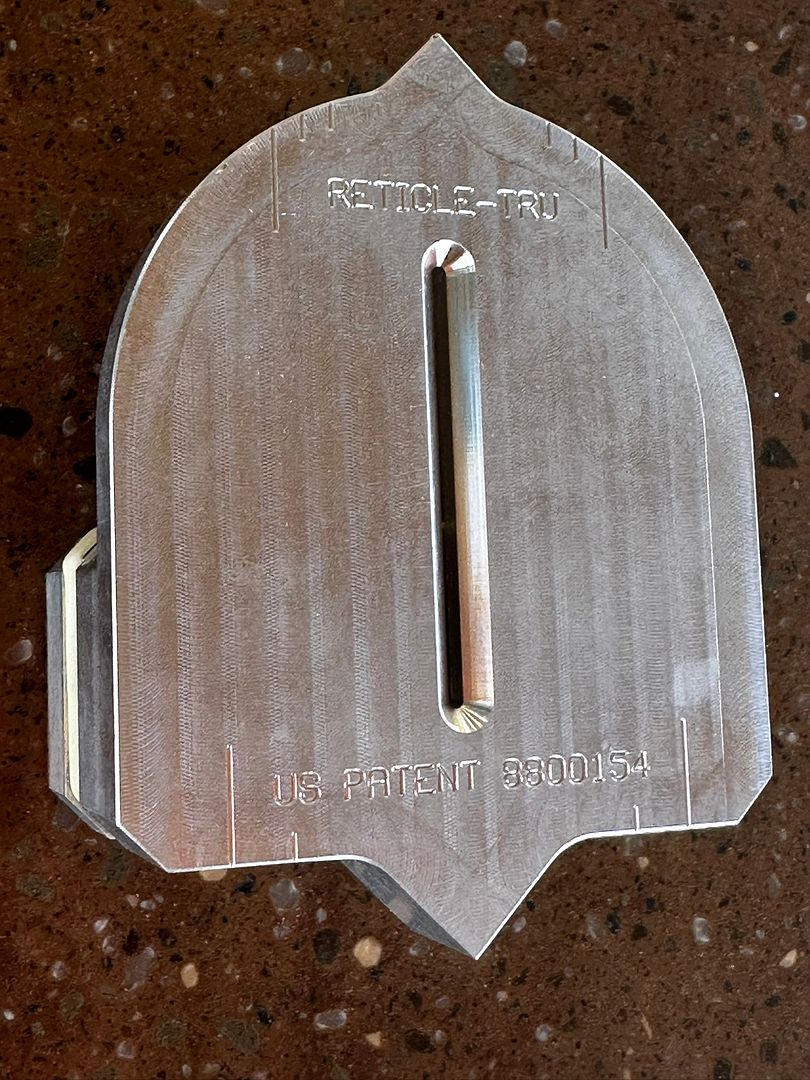- Joined
- May 1, 2024
- Messages
- 875
ExactlyNo need. Just mount the scope square to the receiver.
Follow along with the video below to see how to install our site as a web app on your home screen.
Note: This feature may not be available in some browsers.
ExactlyNo need. Just mount the scope square to the receiver.
Feeler gauges are better than nothing, but they rely on a very short measurement axis (the width of the rail), which introduces a lot of relative uncertainty.If you have a solid rail, I find that using feeler gauges gets the scope the closer to level with the rifle than any other method.
feeler gauges wedged between the scope and rail.
At class Form mounted a scope and eyeballed it level IIRC. Excluding lazers, when you want to level something you use a 4-6 foot level. The .5" or 1" levels are too small to dead nut something IMO.
having scope plumb to gravity at the shot and a scope that tracks plumb
Does this really work?Yeah, THAT.....

Jebus christieIt the rifle has a flat rail (Tikka or full length picc) and the scope has a flat spot on the bottom, I use a carpenters square between the scope and rail and rotate it so one edge presses flat on the action and the other presses flat on the scope, then tighten the scope rings.
Then, I set the rifle on a table, place a level across the action, the use paper to shim the one side or another as needed.
I then use a horizontal line on a wall (that has been checked with a level) and shine a flashlight through the objective lens of the scope so the reticle is projected onto the wall, and tighten down the scope level on the tub so it reads true.
If the action or scope has no flat spot, then level the rifle as best I can and use the line on the wall to set the scope reticle level.
The reticle being true to the scope level is what matters, a few degrees of cant between rifle and scope is immaterial. I don't use rail mounted levels for this reason.
They would have to officially acknowledge you aren't supposed to set a scope to your house lean or natural cant like some are suggesting here and assume all the actions, pic rails and dovetails are perfect.Correct me if I'm wrong... but wouldn't this all be quite easy if ring manufacturers put a tiny mark bottom dead center (bdc) on the face of their rings, and scope manufacturers created a faint line bdc of their scope tubes, line both marks up, tighten the ring tops and voila... you have a leveled scope. Do a tall target test to make sure the turrets adjust properly and you are off to the races.
They would have to officially acknowledge you aren't supposed to set a scope to your house lean or natural cant like some are suggesting here and assume all the actions, pic rails and dovetails are perfect.
Hold the gun, look through the scope and make sure the vertical wire intersects the centre of the cocking piece or firing pin tail
If you use a scope level on your rifle and check it prior to every shot you will probably observe that your natural cant is not consistent.Why not natural cant? Heck, if someone actually sets rifles to natural cant it still might be a useful visual for them to see the offset angle. It's an interesting idea to me but then again i just do what castle rock said and worry about what actually matters, having the scope level set when reticle is verified plumb:
Correct me if I'm wrong... but wouldn't this all be quite easy if ring manufacturers put a tiny mark bottom dead center (bdc) on the face of their rings, and scope manufacturers created a faint line bdc of their scope tubes, line both marks up,
No.Jebus christie
Hold the gun, look through the scope and make sure the vertical wire intersects the centre of the cocking piece or firing pin tail
